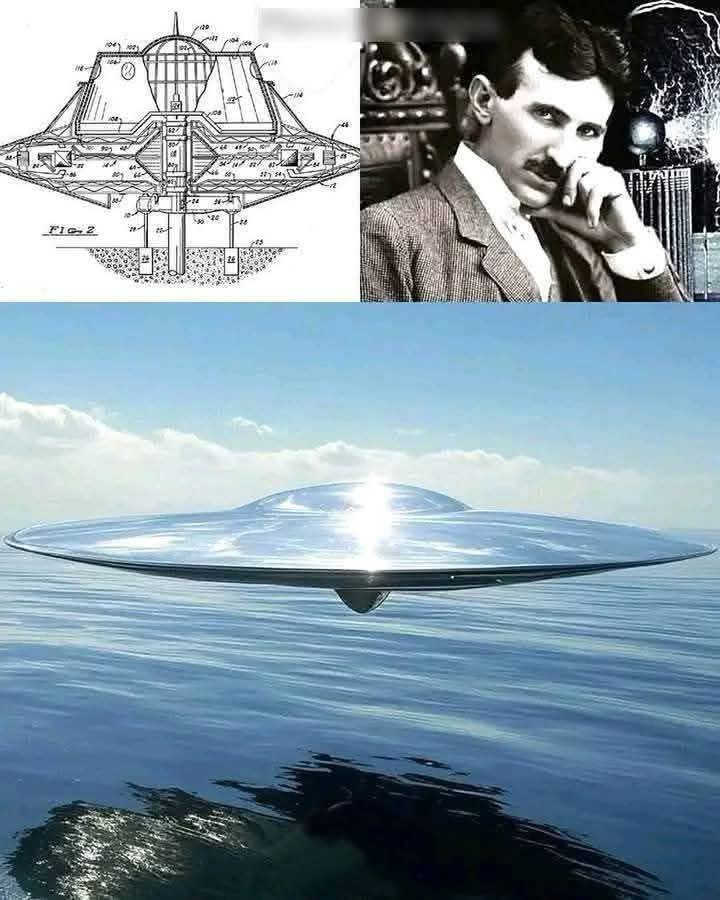
In the annals of scientific history, few names shine as brightly as Nikola Tesla. Known for his pioneering work in electricity, magnetism, and wireless communication, Tesla was a visionary whose genius seemed to stretch beyond the limits of his time. Yet, among his many groundbreaking inventions and theories, one stands out as both a marvel and a mystery—his ambitious design for an anti-gravity flying machine.
In 1928, Nikola Tesla filed U.S. Patent No. 1,655,144 for a remarkable flying machine—one unlike anything the world had ever seen. This was not just another conventional aircraft, but rather a craft that seemed to defy the laws of gravity themselves. The design bore a striking resemblance to what we might recognize today as a flying saucer, a disk-like structure that could maneuver in any direction.
Tesla’s concept was far ahead of his time. He envisioned a vehicle that would not rely on traditional propulsion methods, such as combustion engines or propellers. Instead, his craft would use an electromagnetic propulsion system—what he later referred to as “Space Drive.” Tesla believed that by harnessing the natural energy fields surrounding the Earth, his machine could achieve vertical takeoff and complete freedom of movement.
Tesla’s design was not merely a flight of fancy. He developed detailed plans and even created sketches of the aircraft, demonstrating a clear understanding of the engineering principles behind his concept. The flying machine would be equipped with a series of electromagnets arranged in such a way that they could manipulate the surrounding electromagnetic field, effectively allowing the craft to “float” above the ground or soar through the sky.
But Tesla’s ambitions went far beyond mere flight. He believed that his anti-gravity technology could revolutionize transportation and even unlock the secrets of space travel. According to his writings, the principles of his Space Drive could be adapted to allow for near-instantaneous travel across vast distances, effectively eliminating the limitations of conventional propulsion.
Yet, despite the brilliance of his ideas, Tesla faced significant obstacles. The world of the early 20th century was not ready for his radical concepts. Funding was a constant problem, as investors were hesitant to support what they saw as outlandish ideas. Skepticism from the scientific community also hampered his progress. Many dismissed his anti-gravity machine as a fantasy, failing to recognize the genius behind his theories.
However, Tesla remained undeterred. In his later years, he continued to refine his ideas, exploring the potential of wireless energy transmission, resonance, and electromagnetic waves—all of which were foundational to his anti-gravity concept. He even hinted at having conducted private experiments, suggesting that he had achieved partial success in creating a working prototype of his flying machine.
One of the most intriguing aspects of Tesla’s anti-gravity technology is its connection to his broader theories about the nature of the universe. Tesla believed that everything in the cosmos was interconnected through a web of electromagnetic forces. He theorized that by understanding and manipulating these forces, humanity could unlock incredible new capabilities—such as flight without fuel, limitless energy, and instantaneous communication across the stars.
Unfortunately, much of Tesla’s work on anti-gravity and his Space Drive remained incomplete at the time of his death. His notes and designs were scattered, some lost, and others seized by the U.S. government, fueling conspiracy theories about secret experiments and hidden technologies derived from Tesla’s work.
But even without a completed flying machine, Tesla’s vision continued to inspire generations of scientists, engineers, and dreamers. His concept of electromagnetic propulsion has influenced modern research in fields such as ion propulsion, magnetohydrodynamics, and advanced aerospace engineering.
Today, nearly a century after his passing, Nikola Tesla’s dream of an anti-gravity flying machine remains a tantalizing possibility. Researchers around the world continue to explore the principles of electromagnetic propulsion, hoping to one day achieve what Tesla envisioned—a craft that can defy gravity and travel without limits.
But beyond the technology itself, Tesla’s anti-gravity machine is a symbol of his relentless curiosity, his refusal to accept the limitations of conventional science, and his unwavering belief in the power of human ingenuity. In the words of Tesla himself, “The present is theirs; the future, for which I really worked, is mine.”


